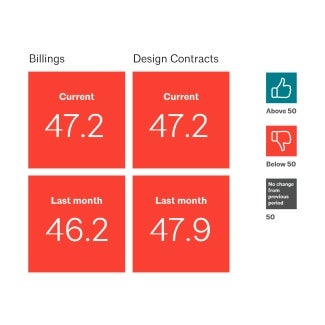ROI: Increasing asset values
Owners and developers are interested in the financial upsides of high-performance design, particularly increasing asset or market value. Green labeling and operational cost reductions help boost a property’s marketability and asset value.

High-performance design market value
Owners and developers are interested in the financial upsides to high-performance design. One key measure is “asset value.” Asset value is commonly perceived as market value, meaning what a property would sell for based on the local real estate market and specific features of a property. Both green labeling and operational cost reductions boost a property’s marketability and asset value.
Literature review completed by University of Washington’s Integrated Design Lab for AIA in 2020.
Green labels and certifications (e.g., LEED, WELL, Living Building Challenge) can improve a property’s marketability and desirability. According to European researchers, the economic advantages of green buildings include their “longer economic lives, lower marketability risk, and lower risk of technical and regulatory obsolescence.”*1
Key green labeling talking points:
- LEED certification has several levels, from certified to platinum. There is “an average 3% increase in rent for each increase in certification level”.*2
- Green buildings can sell for 16% more than conventional buildings.*3
- LEED buildings have a 4.1% higher occupancy rate than noncertified buildings, and Energy Star buildings have a 3.6% higher occupancy rate.*4
- Keeping quality and class constant, LEED-certified Class A urban office sales generated a 25.3% price per square foot premium over non-certified buildings, while LEED-certified Class A suburban office achieved a 40.9% premium over non-certified assets.*5
References:
- Reichardt, Alexander, Fuerst, Franz, Rottke, Nico, & Zietz, Joachim. "Sustainable Building Certification and the Rent Premium: A Panel Data Approach." Journal of Real Estate Research. 2012.
- "The Business Case for Green Building: A Review of the Costs and Benefits for Developers, Investors and Occupants," World Green Building Council. 2013.
- Eichholtz, Piet, Nils Kok, and John M. Quigley. "Doing Well by Doing Good? Green Office Buildings." American Economic Review. 2010.
- Kaplow, Stuart D. "Does a Green Building Need a Green Lease?" University of Baltimore Law Review. 2009.
- Tilden, E. and Schiftan, R. Green is Good Part 2: Sustainability’s Impact on Office Investment Pricing. Research Spotlight. Cushman & Wakefield. 2021.
Operational expenses are the out-of-pocket costs for maintaining and running a building. For a typical company, operational costs account for 6% to 15% of total business expenses.*1
Key operational cost reduction talking points:
- Every dollar saved in energy costs can increase a building’s market value by $18.32 assuming a capitalization rate of 5.5%.*2
- By reducing operational costs, green buildings can charge rental premiums and increase their market value.*3
References:
- Attema, J.E., Fowell, S.J., Macko, M.J., & Neilson, W.C. "The Financial Case For High-Performance Buildings." Stok. 2018.
- Eichholtz, Piet, Nils Kok, and John M. Quigley. "Doing Well by Doing Good? Green Office Buildings." American Economic Review. 2010.
- "The Business Case for Green Building: A Review of the Costs and Benefits for Developers, Investors and Occupants," World Green Building Council. 2013.
Buildings and communities that are designed to effectively absorb shocks and stresses retain value through time, improving community resilience and reducing business risk. Business value can be impacted by shocks and stresses impacting operational, financial, and strategic outlooks. Hazard events have resulted in significant negative impacts on firm valuation, and climate risk scores are being used as a point of consideration for lenders. In some cases, the risk of future shocks has decreased the value of real estate. Homes that were designed to an increased standard also held greater re-sale value. The Task Force on Climate Related Disclosures categorizes three areas of risk:
- Financial (credit risk, liquidity risk, tax strategy)
- Operational (supply chain, raw material availability, business continuity),
- Strategic (competition, changing customer preferences)*1
Key valuation and risk talking points:
- Physical and transitional risks associated with climate change have financial impacts for real estate owners and operators. Physical risks, such as catastrophes, can lead to increased insurance premiums, higher capital expenditure and operational costs, and a decrease in the liquidity and value of buildings. Transitional risks, which center on the economic, political, and societal responses to climate change can impact locations, and even entire metropolitan areas, making them less appealing because of climate-change-related events, leading to the potential for individual assets to become obsolete.*2
- Moody’s, a major credit rating agency for government, municipal, and corporate bonds, has found statistically and economically significant negative impacts of hazard events on subsequent corporate valuation of affected firms. The effect on firm valuation, measured by excess asset or equity returns, can be as large as 2.9% over the first ten weeks after a disaster.*3
- Climate risk scores are being used as information for commercial real estate investors, brokers, and lenders to provide a more holistic view of risk exposure.*3
- As markets increasingly—and more accurately—price the risks of climate change, new and modified financial instruments reflect a new risk-return equilibrium defined in terms of uncertainty and variable time horizons. Instruments such as resilience and catastrophe bonds represent new models for making investments to mitigate risks and/or provide co-benefits.*4
- The “Big Three” credit rating companies—Moody’s Investors Service, S&P Global Ratings, and Fitch Ratings—all say they take climate-related factors into account when assessing government borrowers.*5
- Mortgages in high-risk communities are threatened, as properties become less desirable. Banks are increasingly reluctant to underwrite loans that may become valueless.*6
- Prices of homes in floodplains can be significantly lower than otherwise similar homes located outside of flood zones – though this is not always true in more expensive real estate markets. In one study, homes inside the floodplain were 7.3% less financially valued than those outside the floodplain.*7
- A 2018 study determined that homes vulnerable to flooding in Florida, Georgia, North Carolina, South Carolina, and Virginia had lost $7.4 billion in value between 2005 and 2017. The New York metropolitan area experienced similar devaluation, collectively losing $6.7 billion of value in the same period because of increased flooding from sea-level rise.*8
- A recent study by the Alabama Center for Insurance Information Research (ACIIR) shows that homes built to the "FORTIFIED Standard" in two coastal Alabama counties earned nearly a 7% premium in resale value over those not meeting the standards.*9
References:
- "Guidance on Risk Management Integration and Disclosure." Task Force on Climate-related Financial Disclosures. 2020.
- "Climate Risk and Real Estate Investment Decision-Making". Urban Land Institute. 2019.
- Ozkanoglu et al., "An Empirical Assessment of the Financial Impacts of Climate-related Hazard Events." Moody's Analytics. 2020.
- US Climate Resilience Toolkit. NOAA Climate Program Office. 2022.
- Ward, Jill. "A Climate Reckoning Is Coming for the World’s Government Debt." Bloomberg. 2021.
- Flavelle, Christopher. "Rising Seas Threaten an American Institution: The 30-Year Mortgage." The New York Times. 2020.
- Wiley-Blackwell. "Proximity To A Flood Zone Lowers Property Values." Journal of Risk & Insurance. 2008.
- "As the seas have been rising, home values have been sinking." First Street Foundation. 2018.
- "FORTIFIED Home Building Standards." Urban Land Institute Developing Urban Resilience. 2022.
Resilient design can reduce insurance costs and increase insurability for building owners. Climate-related events have led to dramatic increases in insurance costs or lack of availability of insurance coverage. Municipalities with demonstrated well-enforced and executed building codes withstand climate-related shocks better, and insurance rates can lower insurance costs in those areas. Higher insurance deductibles for non-resilient construction have had more impact than insurance incentives have had in driving owners to choose resilient products or design. Insurance covers physical damages from catastrophic events, but it does not cover loss in value from reduction in asset liquidity, or protect owners from potential investment devaluation.
Key insurability talking points:
The Building Code Effectiveness Grading Schedule (BCEGS) assesses the building codes in effect in a particular community as well as how the community enforces its building codes. Municipalities with effective, well-enforced codes demonstrate better loss experience, and insurance rates can reflect that. The prospect of lessening catastrophe-related damage and ultimately lowering insurance costs provides an incentive for communities to enforce their building codes rigorously—especially as they relate to windstorms and seismic damage.*1
- Most investment managers and investors use insurance as their primary means of protection against extreme weather and climate events. However, insurance will cover damages from catastrophic events; it will not cover loss in value from reduction in the asset’s liquidity. This can be damaging to businesses in their overall valuation, or their ability to quickly react to shocks or stresses with cash on-hand. Insurance coverage is renewed on an annual basis, whereas investors are holding properties over longer years, leaving investors exposed to climate risks over the hold period, and exposure to potential investment devaluation.*2
- Insurance discounts, such as those for impact resistant roofs such as metal roofs, can be up to 35% in Texas for example, the discount may not actually cover the additional upfront cost of switching to a better-performing material. Insurance discounts combined higher deductibles may help drive acceptance.*3
- Some commercial real estate markets have been affected by extreme weather. One insurance brokerage, for example, saw 69% of their real estate and hospitality clients have increases in insurance rates with an average increase of 9.1%, in Q1-3 of 2018.*2
- Some jurisdictions allow insurance discounts for resilient design. For example, the Alabama Legislature requires insurers to offer discounts to owners of homes meeting "FORTIFIED Standards," which offer protection against wind damage.*4
- The mutual insurance company, FM Global (Factory Mutual) for over a century has successfully insured industrial buildings that, if they should fail, would yield large catastrophic consequences (for example unique machinery, chemicals, etc.). Their loss mitigation/control group specifies the standards to which buildings that they insure must be built. This has proven to be a successful model to limit devastating events, reducing the cost of insurance and losses to the insurer; it has been difficult for other insurers, however, to replicate their model due to the complexity of the insurance marketplace, rate-setting rules, and the generally more idiosyncratic nature of building development.
References:
- "Building Code Effectiveness Grading Schedule (BCEGS)." National Building Code Assessment Report. ISO, A Verisk Business. 2019.
- "Climate Risk and Real Estate Investment Decision-Making". Urban Land Institute. 2019.
- Rubio, Paul. "Metal Roof Insurance Discounts: How Much Will I Save?" Western States Metal Roofing. 2020.
- "FORTIFIED Home Building Standards." Urban Land Institute Developing Urban Resilience. 2022.
- Heather Burpee Interview with Rose Grant. 2022.
How to use these talking points
These talking points are intended for use in your conversations with clients, potential clients, civic leaders, vendors, contractors, and other architects. This helps demonstrate that architects are trusted partners in strengthening society, designing solutions, and transforming communities.
This is one chapter in AIA’s series ROI of High-Performance Design. Access the full resource below.
Explore the next chapter in ROI of High-Performance Design.



